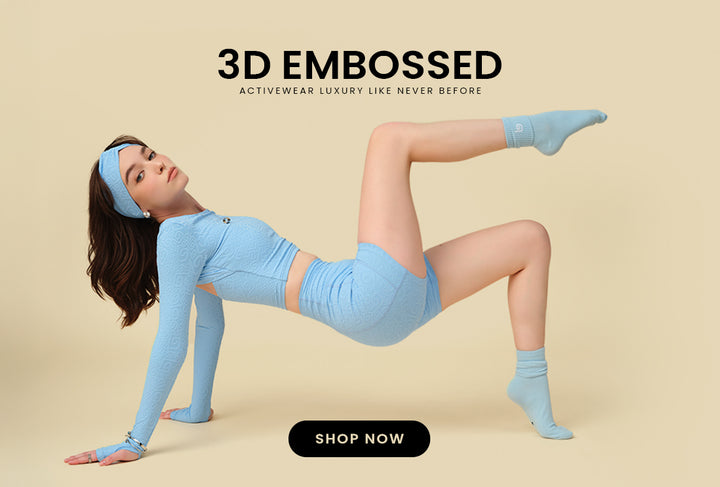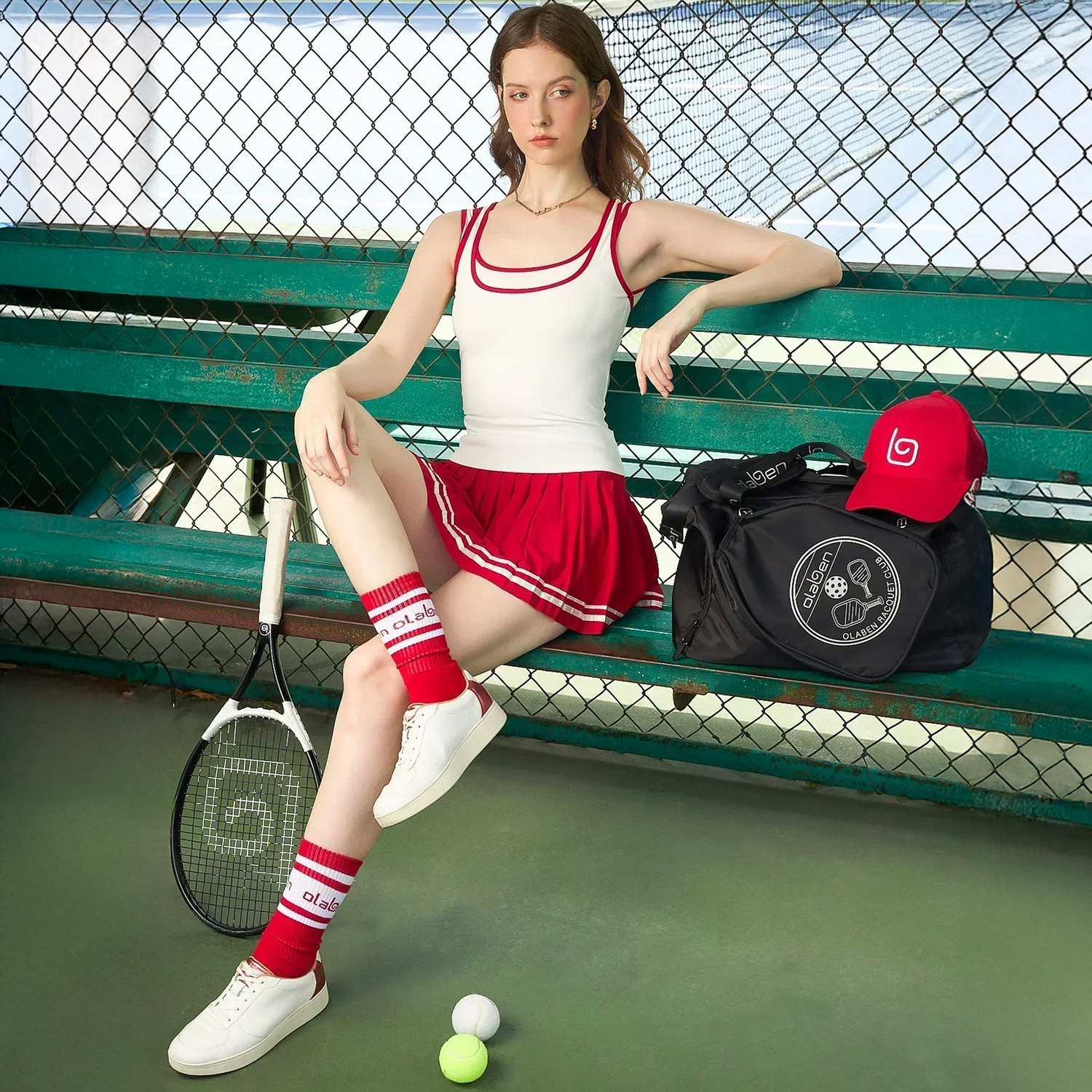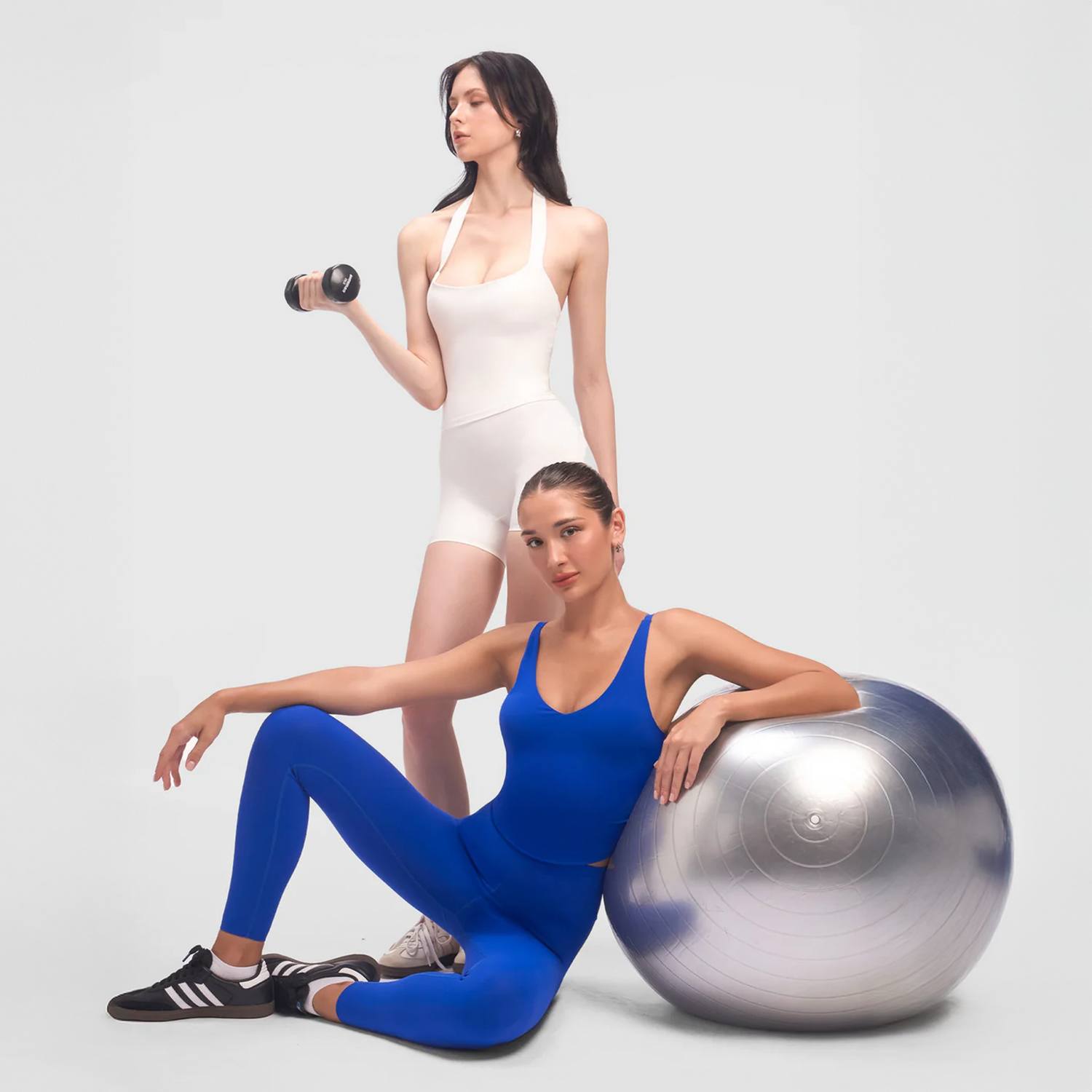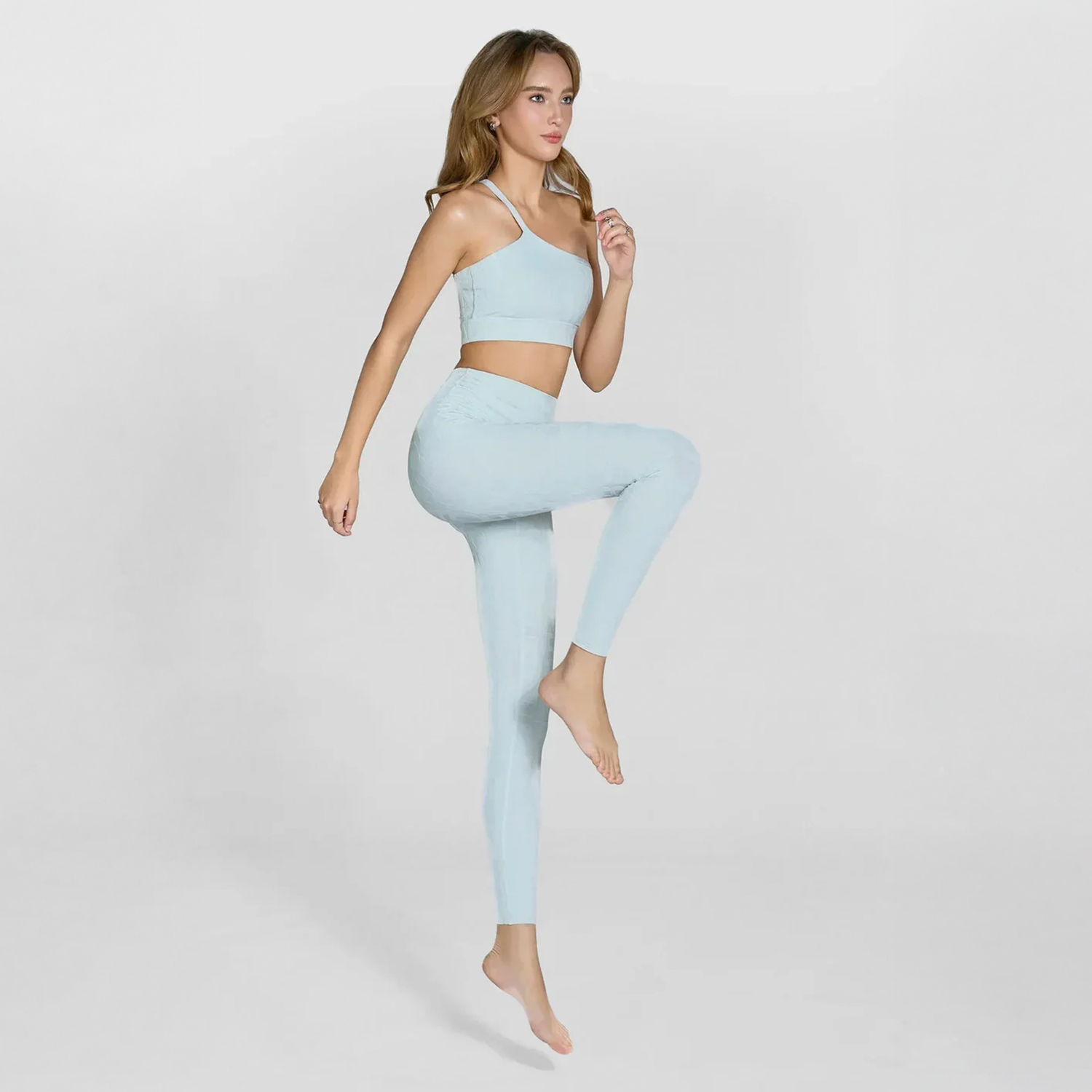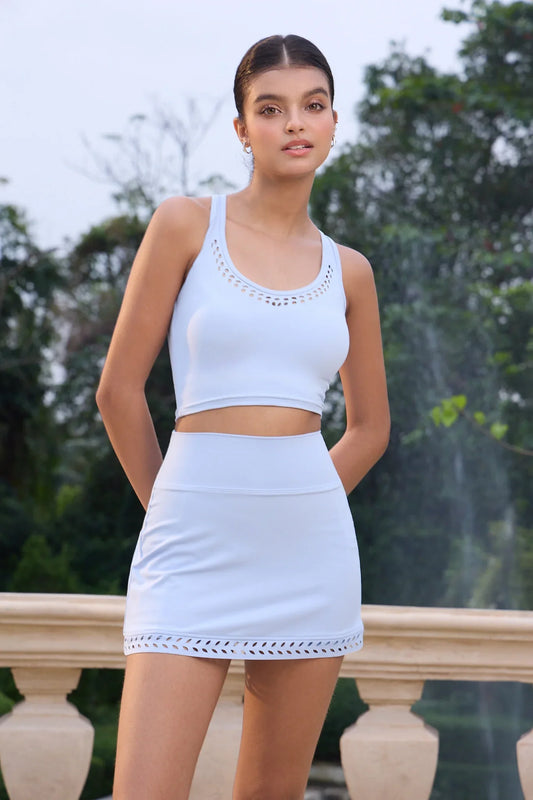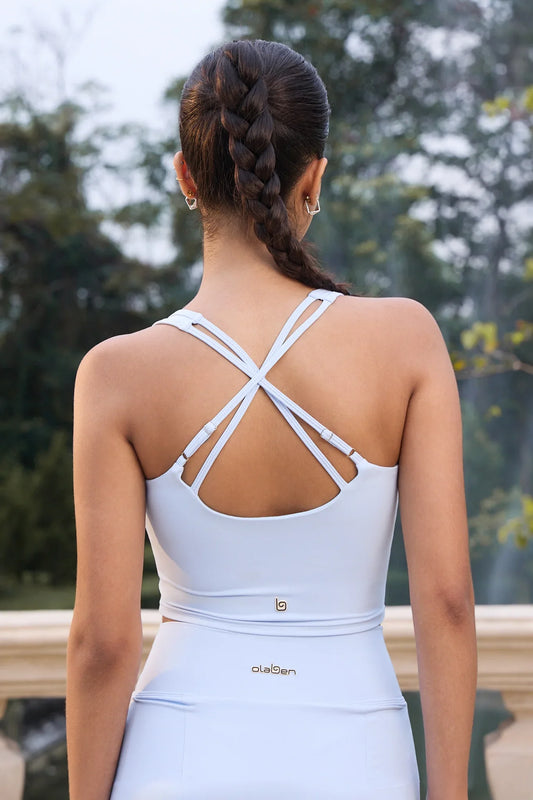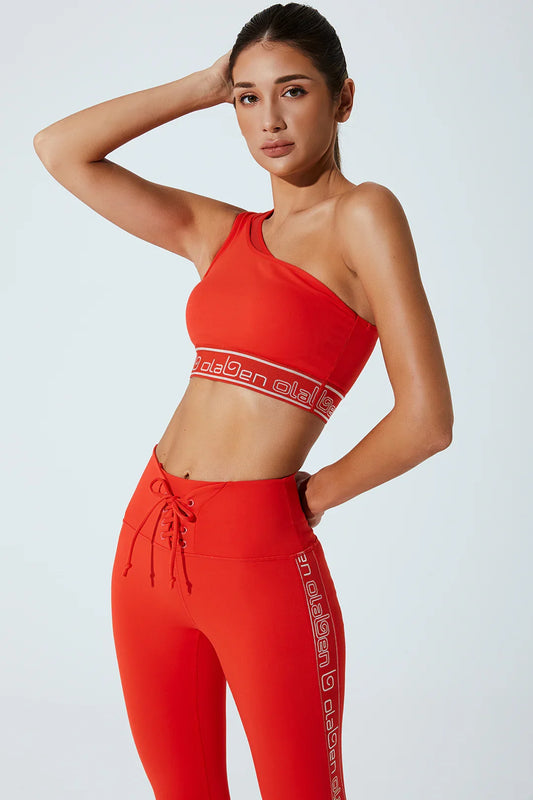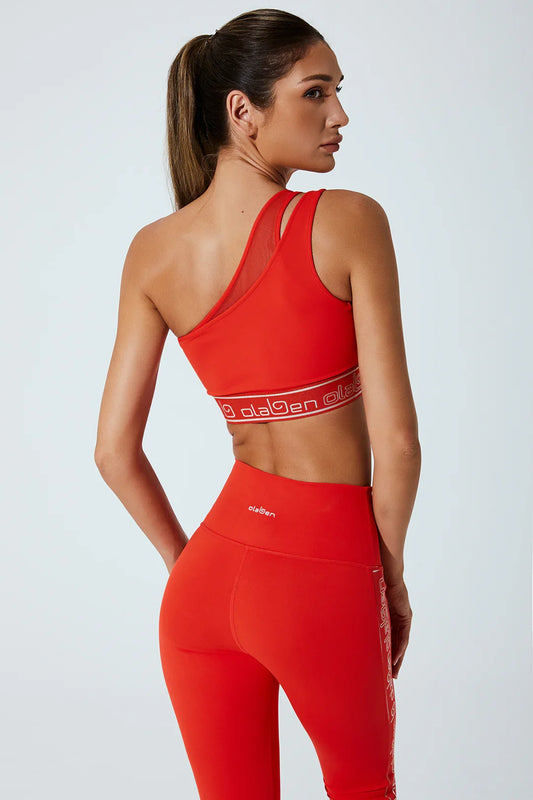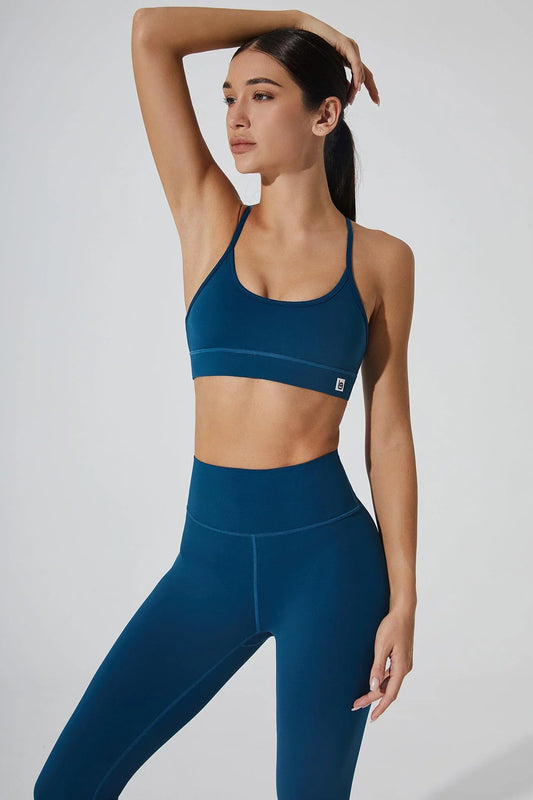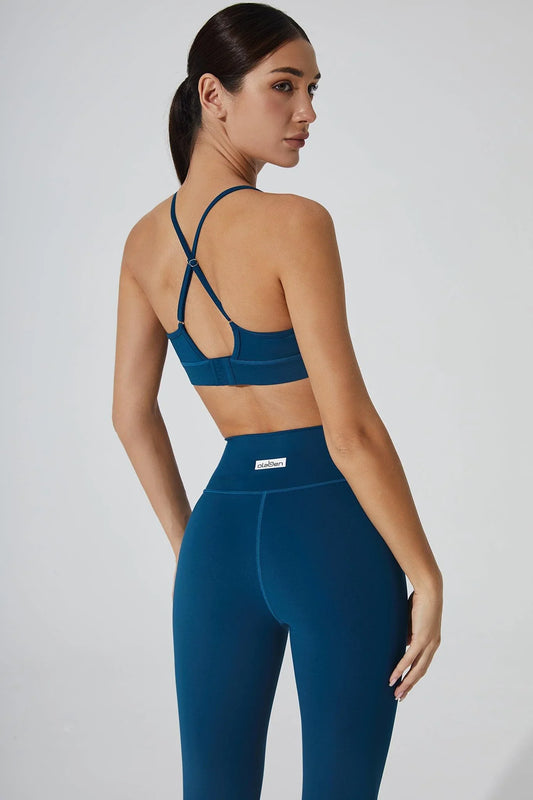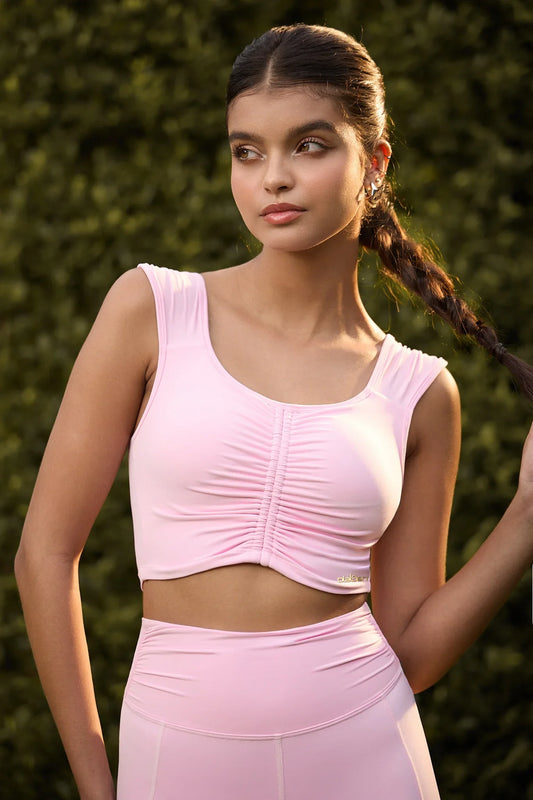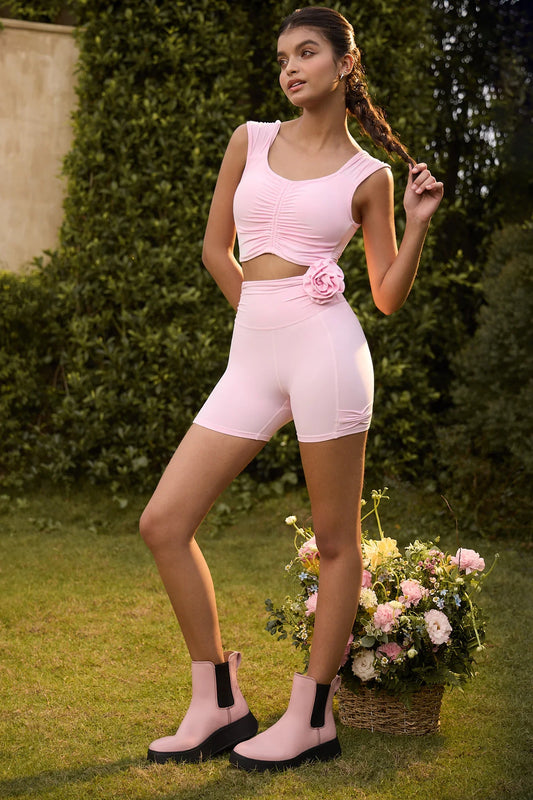Why the Right Fit Matters
Over 80–90% of women wear the wrong bra size—and sports bras are no exception. An ill-fitting sports bra is more than just uncomfortable; it can reduce performance, cause chafing, and even lead to long-term breast tissue strain. The right fit:
- Minimizes movement and bounce
- Protects Cooper’s ligaments (which support your breasts)
- Reduces strain on your shoulders, back, and posture
- Prevents skin irritation and chafing
- Boosts comfort and confidence during workouts
In short, the right sports bra doesn’t just feel better—it helps you perform better.

Key Signs of a Well-Fitting Sports Bra
1. Band Support
The band does most of the support work in a sports bra.
- Should sit level around your ribcage without riding up.
- Snug but not restrictive—you should fit two fingers under the band.
- If it digs in, it’s too tight. If it rides up, it’s too loose.
- Wider bands usually offer more stability for high-impact workouts.
2. Strap Comfort
Straps should hold the cups close to your body—not carry all the weight.
- Lie flat without digging in or slipping.
- Adjustability is key for long-term support.
- Thicker or padded straps distribute weight better for larger busts or high-impact activities.
3. Cup Fit
- Breasts should be fully enclosed with no gaping or spillage.
- Overflow = cup too small. Gaps/wrinkles = cup too large.
- Encapsulation cups (individual support) vs compression (hold against chest) depend on activity and bust size.

How to Measure Yourself for the Right Size
Measure Your Rib Cage (Band Size)
Wrap a tape measure snugly under your bust. Round to the nearest inch.
- 25"–27" → Band 30
- 27"–29" → Band 32
- 29"–31" → Band 34
- 31"–33" → Band 36
- 33"–35" → Band 38
-
35"–37" → Band 40
Measure Your Bust (Cup Size)
Measure across the fullest part of your bust. Subtract your band size.
- 1" difference = A cup
- 2" = B cup
- 3" = C cup
- 4" = D cup
- 5" = DD/E
-
and so on.
Try On & Test
Sizes vary by brand—always test by moving, jumping, or running in place.

Common Fit Issues & Quick Fixes
Band rides up
- Signs: When you raise your arms or move around, the band at the bottom of the bra shifts upward instead of staying level across your ribcage.
- Why it happens: The band is too loose or has stretched out over time.
- Fix: Go down one band size while keeping the same cup size. When trying on, make sure the band sits evenly around your body and stays in place when you jump or run in place.
Cup spillage
- Signs: Your breasts overflow from the top or sides of the bra, creating bulging or a compressed look.
- Why it happens: The cup is too small to fully contain your breast tissue.
- Fix: Size up in the cups. Look for encapsulation styles with individual cups that provide enough coverage without squeezing too tightly.
Cup gaping
- Signs: The cups wrinkle, or there are gaps where your breast doesn’t fill the fabric completely.
- Why it happens: The cup is too large, or the bra style doesn’t match your breast shape.
- Fix: Go down one cup size. If you have less upper breast volume, a compression style may give a more secure fit.
Straps digging in
- Signs: Your shoulders develop red marks or soreness where the straps press down.
- Why it happens: The band isn’t providing enough support, so the straps carry all the weight. Straps may also be too thin to distribute pressure evenly.
- Fix: Try a smaller band size so the band provides more support. Choose bras with wider or padded straps to reduce pressure. Adjust strap length so they sit firmly without cutting in.
Straps slipping
- Signs: The straps keep falling off your shoulders during movement, forcing you to readjust frequently.
- Why it happens: The straps are too loose, too long, or your shoulders slope downward.
- Fix: Shorten the straps for a closer fit. Consider racerback or cross-back designs that stay in place more securely. If the elastic in the straps has worn out, it’s time to replace the bra.
Final Thoughts
Finding the right sports bra is about more than numbers on a label—it’s about comfort, support, and confidence. Take the time to measure yourself, try different styles, and choose based on both your body and your activity level.
With the right sports bra, you’ll protect your body, prevent discomfort, and perform at your best—every time you move. Brands like Olaben design sports bras that combine technical support with modern aesthetics, giving you both performance and style in one. If you’re looking for a piece that feels good and looks good, Olaben offers versatile options that adapt to your movement—whether you’re on the mat, at the gym, or out for a run.
